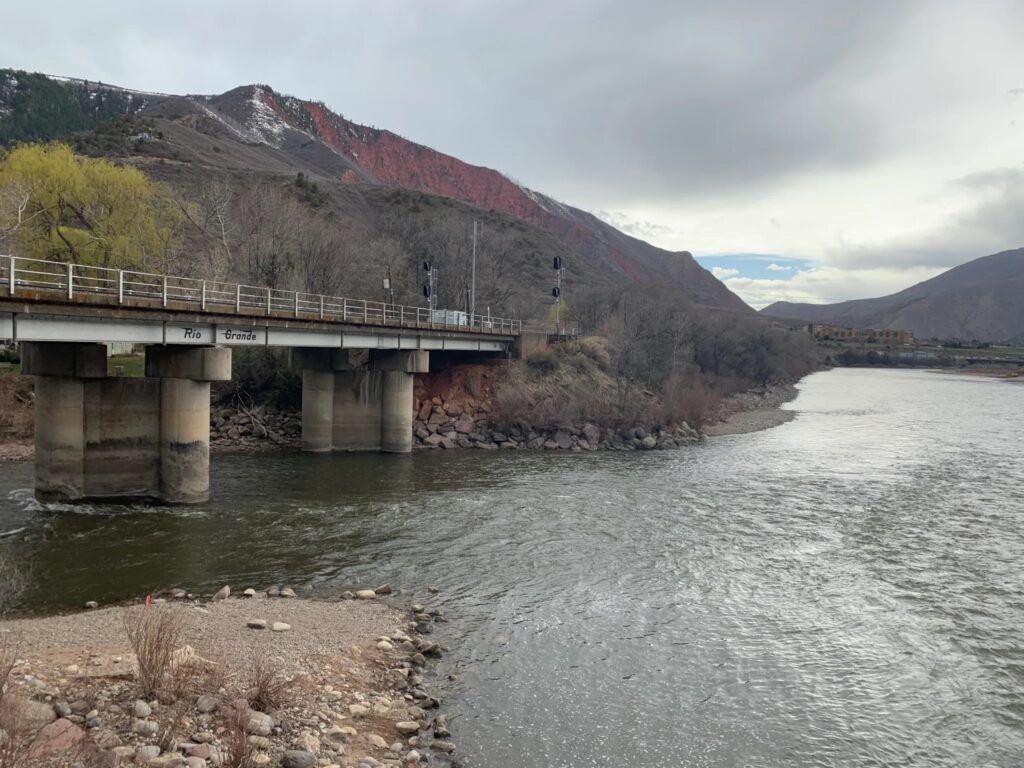
Colorado’s predictions for spring runoff are looking better than the past two years, but streamflows are still expected to be below normal. And the lingering effects of the two previous drought years means reservoirs remain depleted and may not fill.
According to the April 2022 Water Supply Outlook from the National Resources Conservation Service, snowpack across the state was slightly below normal at 90% of median, precipitation was 96% of median and the streamflow forecast for the coming months is for 82% of median. Locally, the numbers are a bit better. As of April 1, snowpack for the Roaring Fork River basin was at 98% of median. The streamflow forecast is close behind at a predicted 94% of median.
In typical years, snowpack and streamflow track closely, but dry soils that sucked up snowmelt in 2021 and 2020 meant that a near-normal snowpack translated to streamflows that were far below average. Last year, streamflows in many areas of the state were down 15-20% compared to snowpack. And across the upper Colorado River basin, a near-normal snowpack resulted in an 2021 water-year inflow to Lake Powell that was just 34% of normal.
This spring should see a bit of relief from that trend, said Karl Wetlaufer, a hydrologist and assistant snow survey supervisor with NRCS.
“It’s much better than the last two years where the drought conditions in the summer dried out the soils,” he said. “We are expecting more of that snow to end up in the rivers and streams.”

Reservoirs low, some won’t fill
But even though things on the whole are better than the previous two years, the lingering effects of drought means reservoirs are depleted and may take several seasons to rebound.
“The whole picture is looking better than the last two years in western Colorado, but low reservoirs are going to be a major component of the water supply people will actually have available,” Wetlaufer said.
According to the April report, the Colorado River basin ended March with 83% of median storage. Ruedi Reservoir on the Fryingpan River is currently just 54% full and dropped to its lowest level in almost two decades at the end of March.
The Gunnison River basin was just one of two basins in the state that was at or above median at 100% of median snowpack; precipitation was 108% of median and streamflow was forecast to be 95% of median. But several of the basin’s reservoirs are well below normal. Basin-wide reservoir storage in the Gunnison was at 63%. After federal emergency releases last summer and fall to prop up Lake Powell, Blue Mesa is just 29% full.
According to a memo from Dave Kanzer, director of science and interstate matters at the Colorado River Water Conservation District, to River District board members, Dillon, Green Mountain, Granby, Williams Fork and Wolford Mountain reservoirs are not expected to fill in 2022.
“For western Colorado within the River District, things are concerning, and our main reservoirs will not fill in the headwaters of the Colorado,” Kanzer said. “It’s obvious that we are going to have very little carry-over storage going into next year. It’s not the worst news, but it’s a challenge.”
Kanzer said some water users that do not hold contracts for water in Wolford, which is upstream of the town of Kremmling and is owned and operated by the River District, may have to take shortages this year. Inflow into Wolford this spring is projected to be about 60% of median. Some of that contract water is for augmentation, or replacement, which is released downstream to allow junior water users to keep using water when flows get low in late summer. Kanzer said the River District should be able to meet all of its contractual obligations even though Wolford won’t fill this year.
“The reservoirs provide the supplemental supply for when the rivers naturally fall,” Kanzer said. “The rivers will fall earlier, and contracts will run out sooner and the late season supply is most at risk and junior water users are most at risk.”
The statewide snowpack was close to the peak for the year when abnormally warm temperatures March 24-28 started the annual melting and a rise in rivers. But Tuesday’s snowstorm, which dropped up to a foot in parts of Colorado’s high country, added a bit more to the snowpack.
“A big storm this time of year definitely has the potential in many parts of the state to cause an additional even higher peak, which could be our final one,” Wetlaufer said. “But one day of warm weather and the whole snowpack will be melting again.”
Across the upper Colorado River basin, inflow into Lake Powell from April to July is expected to be 64% of average, according to the April projections from the Colorado Basin River Forecast Center. That is a 5% decrease from the March forecast. Lake Powell is currently at 3,522 feet elevation, and 24% full.
Aspen Journalism covers water and rivers in collaboration with The Aspen Times. This story ran in the April 13 edition of The Aspen Times and the Glenwood Springs Post-Independent.
Editor’s note: This story has been changed to reflect that those water users who hold contracts for water in Wolford Reservoir will not have to take shortages.
The Water Desk’s mission is to increase the volume, depth and power of journalism connected to Western water issues. We’re an initiative of the Center for Environmental Journalism at the University of Colorado Boulder. The Water Desk launched in April 2019 with support from the Walton Family Foundation. We maintain a strict editorial firewall between our funders and our journalism.





